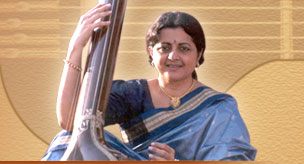
Hindustani Classical Music has the capacity to encompass the entire human dimension of life artistically, philosophically and intellectually.
As Swami Vivekanand has put it, "Music is the highest and purest form of all arts." Hindustani, i.e. North Indian Classical music is a complete art in itself, its medium being just a single voice which can create the effect of an entire orchestra. The impact that it creates on its listeners is not merely soothing but also largely rejuvenating. Though Hindustani music dates back to the Sama Veda from where it got its origin, the actual form that we hear today is Khayal, Thumri, Dadra, Tarana Tappa and other associated forms like Hori, Chaiti, Jhula and Sawan.
Hindustani Music has evolved from the Vedic chanting of Richas or Shlokas which were hymns in three notes (swaras). Later, the Grama, Murchana system of five and seven notes in a musical scale was recognised by the great Bharat Muni in his Bharat Natya Shastra in the 2nd century A.D. A further development of Prabhandh Sangeet and especially Jaati Gayan described in well known treatises by eminent scholars like Matang around (7th century A.D.) and Sharang Dev (13th century A.D.) gives a clear picture of raga sangeet (30 ragas were derived from 18 Jaatis). From the 13th century onwards the earliest well structured form of music was Drupad Dhamar which is the immediate predecessor and basis of Khayal Gayaki existent today.
|




